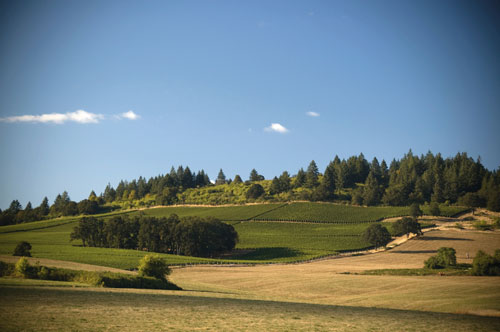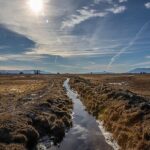 Fertile land is the lifeblood of Oregon’s agricultural industry, a major economic driver that is almost completely family-run. But land — including the physical space, topsoil and rock underneath it — is a lucrative resource and contenders include aggregate mining companies. The reason: much of the highest-quality basalt is located under the best soil.
Fertile land is the lifeblood of Oregon’s agricultural industry, a major economic driver that is almost completely family-run. But land — including the physical space, topsoil and rock underneath it — is a lucrative resource and contenders include aggregate mining companies. The reason: much of the highest-quality basalt is located under the best soil.
|
Fertile land is the lifeblood of Oregon’s agricultural industry, a major economic driver that is almost completely family-run. But land — including the physical space, topsoil and rock underneath it — is a lucrative resource and contenders include aggregate mining companies. The reason: much of the highest-quality basalt is located under the best soil.
In this year’s legislative session, efforts by the Oregon Farm Bureau and other supporters failed to result in legislation to protect the best soil from mining. In Oregon, aggregate mining of Class 1 and Class 2 soil is only permitted in the Willamette Valley. The Oregon Farm Bureau views this as nothing less than the destruction of the state’s most valuable asset.
“We’re not going to give up; the issue is real and it has to be addressed at some point in time,” says Bruce Chapin, farmer and Farm Bureau board member.
According to a 2004 report by the Oregon Department of Agriculture (ODA), “Farmland is under constant pressure for development to other uses . . . Oregon’s current land planning system does not properly account for the value of these perpetual benefits that agriculture has to offer.” The benefits include food security, renewable energy potential and wildlife habitat.
ODA is not completely opposed to mining Class 1 or 2 soil, if companies prove there are no reasonable alternatives.
Post-mining reclamation is required, but reclaiming it back to farmland is not. Sites are reclaimed for a variety of uses, including farmland, fish habitat, forestry and recreation.
According to Gary Lynch of the Oregon Department of Geology and Mineral Industries, clear, current data is needed on the issue. They plan to start a new data-gathering project soon.
Rich Angstrom, president of the Oregon Concrete and Aggregate Producers Association, stresses aggregate’s necessary role in construction projects, but admits mining companies are usually the second cousin no one wants over for dinner.
“If you move the industry off of prime soils into the hills,” Angstrom says, “there’s a whole other series of people who don’t want
aggregate in their back yard.”


